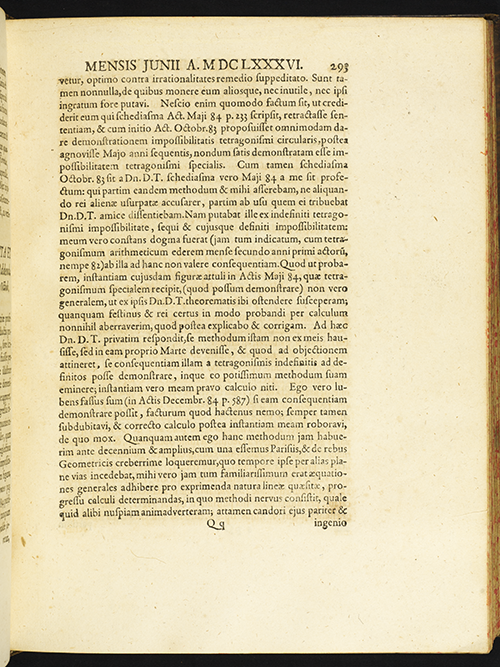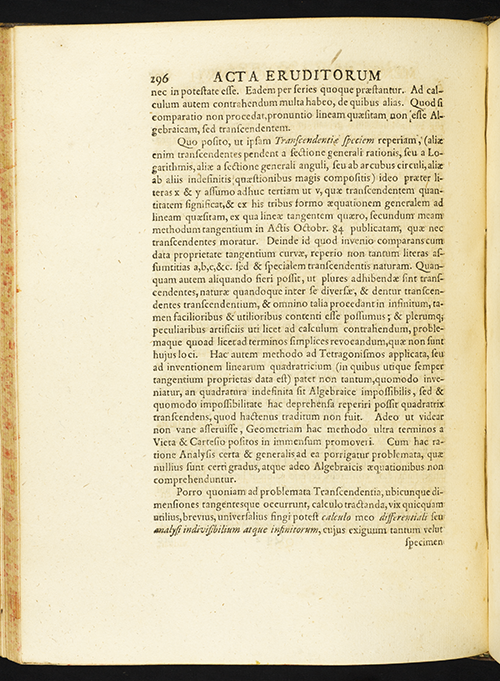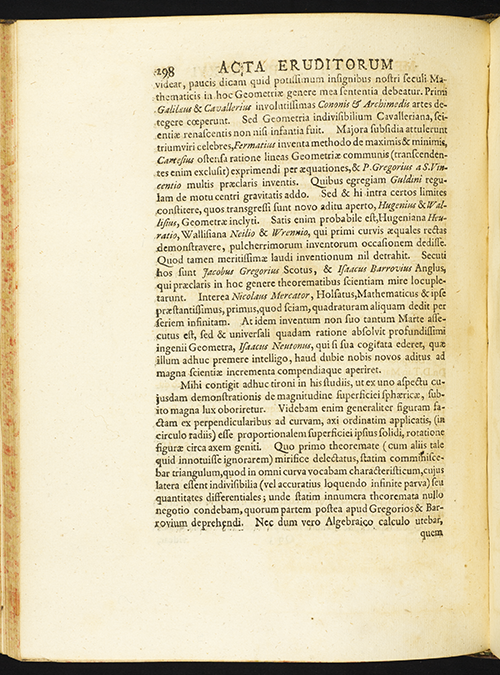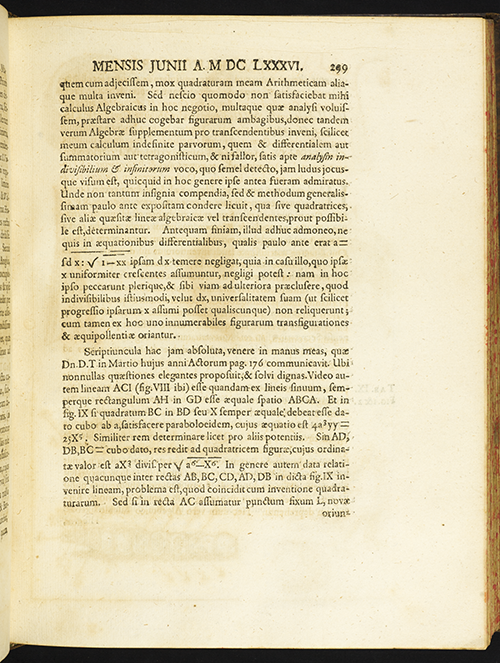- About MAA
- Membership
- MAA Publications
- Periodicals
- Blogs
- MAA Book Series
- MAA Press (an imprint of the AMS)
- MAA Notes
- MAA Reviews
- Mathematical Communication
- Information for Libraries
- Author Resources
- Advertise with MAA
- Meetings
- Competitions
- Programs
- Communities
- MAA Sections
- SIGMAA
- MAA Connect
- Students
- MAA Awards
- Awards Booklets
- Writing Awards
- Teaching Awards
- Service Awards
- Research Awards
- Lecture Awards
- Putnam Competition Individual and Team Winners
- D. E. Shaw Group AMC 8 Awards & Certificates
- Maryam Mirzakhani AMC 10 A Awards & Certificates
- Two Sigma AMC 10 B Awards & Certificates
- Jane Street AMC 12 A Awards & Certificates
- Akamai AMC 12 B Awards & Certificates
- High School Teachers
- News
You are here
Mathematical Treasure: Leibniz's Papers on Calculus - Integral Calculus

Above is the title page of the 1686 volume of Acta Eruditorum.

This is the first page of the June 1686 issue (Number VI) of Acta Eruditorum, in which Leibniz published a second article describing the Calculus on pages 292-300.

In the June 1686 issue of Acta Eruditorum, Leibniz (G.G.L.) published “De geometria recondita et analysi indivisibilium atque infinitorum,” or "On a hidden geometry and analysis of indivisibles and infinites." In this article we find the first public occurrence of the integral sign \(\int\) and a proof of “The Fundamental Theorem of Calculus.” A partial translation from Latin to English of the article can be found in D. J. Struik's A Source Book in Mathematics (1200-1800), pp. 281-282. The remaining pages of the original article appear below.





On page 297 above, Leibniz pointed out that \(p\,dy=x\,dx\) implies \({\int{p}}\,dy={\int{x}}\,dx\), and therefore, in particular, \(d\left({\frac{1}{2}}xx\right)=x\,dx\) implies \({\frac{1}{2}}xx={\int{x}}\,dx.\) He then wrote, "... sums and differences or \({\int}\) and \(d,\) are reciprocals" ("summae & differentiae seu \({\int}\) & \(d,\) reciprocae sunt"), and concluded from his preceding equations that \({\int{p}}\,dy={\frac{1}{2}}xx.\)



The images above are used through the courtesy of the Lilly Library, Indiana University, Bloomington, Indiana. You may use them in your classroom; for all other purposes, please seek permission from the Lilly Library.
Reference
D. J. Struik (editor), A Source Book in Mathematics (1200-1800), Harvard University Press, Cambridge, Mass., 1969.
Frank J. Swetz (The Pennsylvania State University), "Mathematical Treasure: Leibniz's Papers on Calculus - Integral Calculus," Convergence (June 2015)




